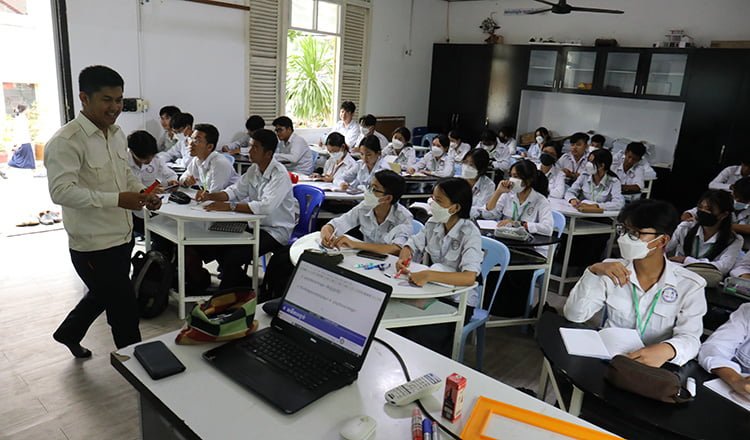Written by, H.E Samheng Boros
Have you ever wished to live a more mindful life but found it difficult to find the time in your busy schedule?
What if there was a substance that could offer you a happier, healthier, calmer version of yourself along with a stronger, healthier brain, reduced stress, help in warding off anxiety and depression, better sleep, and a better mood?
What if science could provide many research studies to support its healing, restoring, and protective effects? In fact, the answer is right here in our hands. In a nutshell, it is paying attention in the present moment. Beginning a regular mindfulness practice is challenging, and there will be setbacks along the way.
These thorough, science-based activities will not only help you find inner peace throughout your day, but they will also equip you with the skills necessary to improve the mindfulness of your clients, students, children, staff members, or anyone else related to you.

Mindfulness is the awareness of thoughts, feelings, and sensations in the present moment. The objective is to let thoughts, feelings, and sensations pass through without judgment or the urge to act on them.
It involves accepting with gentleness whatever comes into your awareness in the present moment. It’s about exploring your experience and growing your knowledge of your own inner world – the things that drive you, motivate you, get in your way, trip you up, and keep you stuck. The more you practice mindfulness, the more you will understand how your thoughts, feelings, and sensations interact with one another, as well as your mood and how you respond to the world.
Mindful breathing is the best mindfulness exercise.
This exercise is very simple, but it can have a very big effect. The exercise is just to tell the difference between an in-breath and an out-breath. When you breathe in, you know it’s your in-breath. When you breathe out, you are aware that this is your out-breath. You must return your mind back to yourself in order to perceive your in-breath as in-breath.
Sit quietly in a seated position. Concentrate on your breathing while seated. Deeply inhale for three seconds, then slowly exhale for three seconds. When you find your thoughts wandering, return to your breath and inhale deeply for three seconds, followed by a thorough exhalation for three seconds.

You can enjoy your breathing. The practice may be pleasant and joyful. Get comfortable and begin to take strong, slow, deep breaths. Ensure that your belly moves up and down as you breathe. Be conscious of what is happening in your body when the breath comes and then leaves. Recognize your thoughts if they come. Let them be, then leave them. If your mind starts to wander, just admit it, figure out where it went, and gently bring your attention back to your breath. Be present without the need to rush or move on to the next activity of the day. This can be challenging, but remind yourself that whatever happens is acceptable. Simply observe it, accept it as it is, and let it go.
The benefits of mindful breathing.
Mindful breathing has many benefits that have been shown by science. Here are a few.
Mindfulness turns on your body’s “rest and digest” system, which makes you feel less anxious. When the parasympathetic nervous system is working, your heart rate and blood pressure will go down. This can help you feel less anxious.
In our modern age, stress is something we know all too well, and it’s common for adults to feel stressed out from their jobs. A study published in the Journal of Medical Internet Research found that mindful breathing reduces stress, burnout, cynicism, emotional exhaustion, and anxiety.

A 2016 study published in the Annals of the New York Academy of Sciences found that mindfulness meditation can help reduce the intensity of pain and should be studied more as an alternative to opioids for people with chronic pain conditions like fibromyalgia, migraines, and lower back pain.
Reduces negative thoughts: According to a study published in Behaviour Research and Therapy in 2010, practicing mindful breathing can reduce negative, repetitive thoughts that are common in people with depression. This can lead to a better mood.
What is perceiving your in-breath is your mind, and the object of your mindfulness is the in-breath. Mindfulness is always aware of something. It will take some practice before you really master this breathing method. Some people struggle to do it naturally.
When practicing mindfulness, our brain tries to bombard us with numerous distractions because conscious breathing is not something we do constantly. You might experience negative feelings, anxious thoughts, and to-do list items.
That’s alright. Everything is a part of learning.
H.E Samheng Boros is Minister attached to the Prime Minister , Royal Government of Cambodia and Chairman of National Social Assistance Fund Board (NSAF) and Secretary of State at the Ministry of Social Affairs, Veterans and Youth Rehabilitation (MoSVY).









